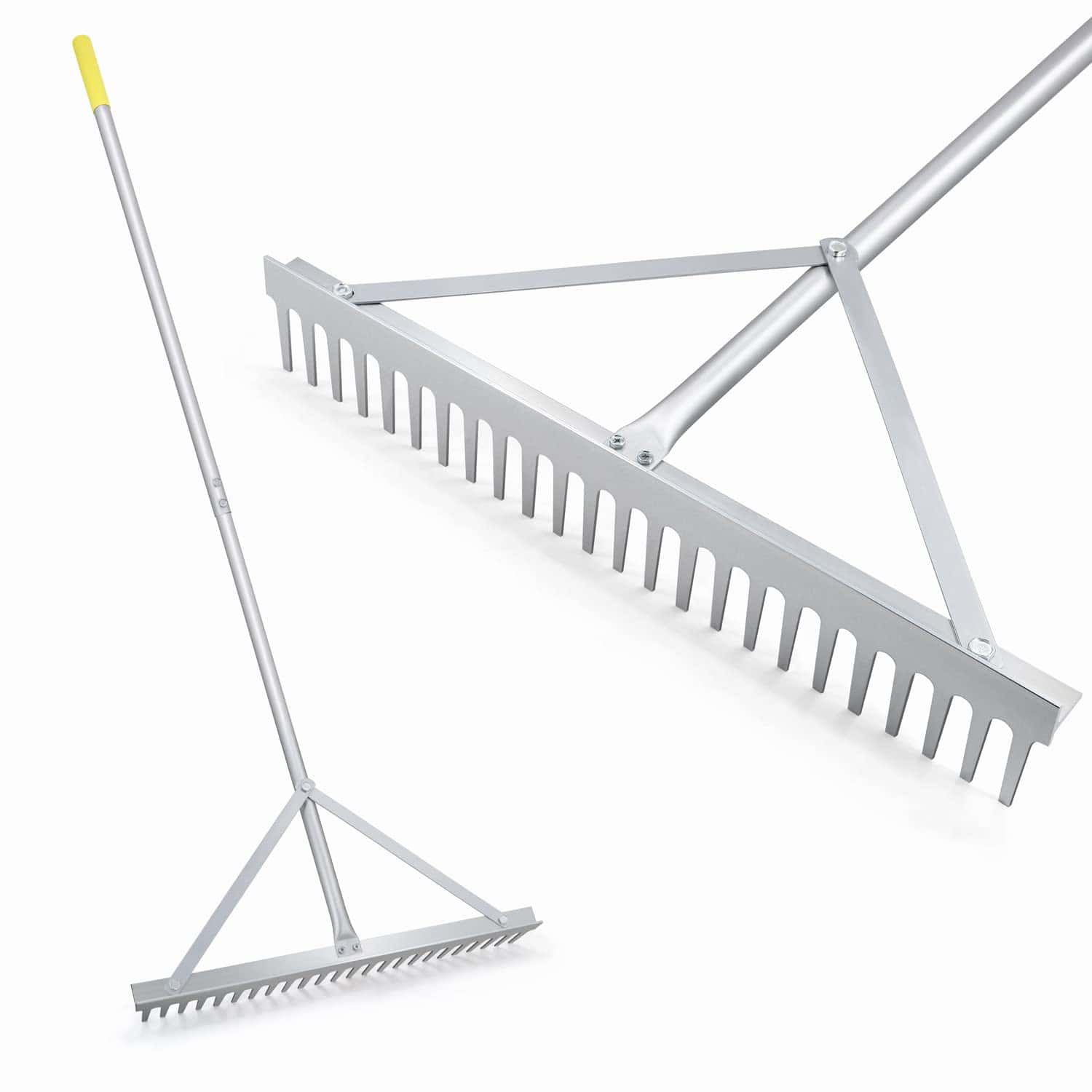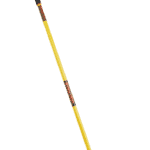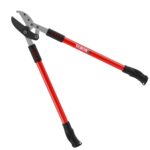When it comes to yard work, a landscape rake is a versatile tool that can really help out. It’s designed to level soil, remove debris, and create a clean foundation for your landscaping projects. With a landscape rake, you can achieve a professional-looking yard without much effort.
A landscape rake can make your yard look neat and tidy. It’s ideal for tasks like removing rocks, leaves, and other debris from large areas. This tool is perfect for creating a smooth, even surface that’s ready for planting or other landscaping work. It attaches to tractors or other equipment, making it very efficient for big jobs.
Using a landscape rake can save you time and effort. Its design lets you cover large areas quickly. Whether you’re preparing your yard for new plants or just keeping it clean, this tool is a solid choice. Learn more about the benefits of landscape rakes on sites like Rakeadvisor and Bob Vila. This way, you can get the most out of your yard work.
Types and Features of Landscape Rakes
Landscape rakes are versatile tools used in gardening and landscaping. They come in different materials and designs, each with features suited to specific tasks like clearing rocks or leveling soil.
Materials and Durability
Landscape rakes are often made from aluminum, wood, fiberglass, and stainless steel.
Aluminum rakes are light and easy to handle, making them great for longer tasks. They resist rust and are very durable. Wood handles offer a classic feel and are sturdy but may be heavier than other materials. Fiberglass is also lightweight and strong, perfect for heavy-duty use. Stainless steel rakes are highly durable and resist rust, though they can be heavier, making them suitable for tough jobs.
Table:
| Material | Durability | Weight | Best Use |
|---|---|---|---|
| Aluminum | High | Light | General landscaping |
| Wood | Medium | Medium | Traditional gardening |
| Fiberglass | High | Light | Heavy-duty tasks |
| Stainless Steel | Very High | Heavy | Tough jobs |
Design and Ergonomics
Landscape rakes have different designs to make them easier to use.
The handle length is important for comfort. Long handles reduce bending and back strain. Ergonomic handles improve grip, providing comfort during use. Rakes with a wide head can cover more ground quickly.
Tines are another key feature. Some tines are flexible for gathering leaves, while sturdy tines can dig into the soil or move rocks.
This mini-garden rake is good for evening out soil in small garden beds. It is a miniature version of a garden rake with the same design on a smaller scale.
Specialized Landscape Rakes
Different tasks require different rakes.
A rock rake has sturdy tines for moving stones. A leaf rake has flexible tines for gathering leaves without damaging lawns. A bow rake is good for leveling soil and mixing materials.
The shrub rake is smaller and can fit into tight spaces, ideal for tidying up around plants. The thatch rake helps remove dead grass and thatch from lawns to promote healthy growth. A pond rake cleans ponds by removing algae and debris.
By choosing the right type, you can handle any landscaping task more effectively.
Applications of Landscape Rakes
Landscape rakes are highly versatile tools used for preparing soil, cleaning debris, and various landscaping tasks. They can be attached to tractors or used by hand, making them suitable for both small and large projects.
Soil and Ground Preparation
Landscape rakes are essential for soil preparation. They level soil, helping remove rocks, clumps, and debris. This makes the ground smooth for planting or sod laying. One crucial job is soil grading, where the rake creates a firm and even surface. This is key when preparing for new turf or garden beds.
Using a landscape rake before planting helps grade and level the soil. It removes large rocks and even fills in small holes. This tool is especially useful in larger yards or fields where manual raking would take too long.
Cleaning and Maintenance
Landscape rakes are great for cleaning and yard maintenance. They can collect dead leaves, branches, and other debris that clutter a lawn. A rake can also help manage gravel paths by spreading gravel evenly and filling in low spots.
In the fall, a landscape rake makes raking leaves quick and easy. It’s an efficient way to clean up and prepare your lawn for winter. They can also dethatch lawns by removing dead grass and other organic material, promoting healthy growth.
Gardening and Landscaping Tasks
For gardening, landscape rakes help spread mulch and mix compost into the soil. A mulch rake can distribute mulch evenly over garden beds, helping plants retain moisture and reducing weeds. When preparing vegetable gardens, mixing compost is key for fertile soil, and a landscape rake makes this task easier.
In landscaping, these rakes are ideal for leveling small areas before laying turf or building garden paths. They’re good for spreading and leveling gravel, helping to create smooth, professional-looking pathways. They can handle both light and heavy-duty work, making them a useful tool in any landscaping project.
Specialized Techniques
There are specialized techniques for using landscape rakes. For example, a stone rake can remove large rocks from the soil, and a concrete rake helps in projects involving wet concrete, creating a smooth level finish. Hay rakes are applied in agriculture to collect cut hay.
A tractor-attached landscape rake can efficiently handle large areas, saving both time and effort. They are ideal for commercial landscaping where precision and speed are crucial. Specialized rakes help with more complex jobs, ensuring better results and easier use.
Landscape rakes are a valuable tool for various tasks in gardening, yard maintenance, and landscaping. Their versatility makes them a must-have for those looking to maintain and beautify their outdoor spaces.
Frequently Asked Questions
Landscape rakes are versatile tools used in various gardening and landscaping tasks. They can be operated manually or attached to tractors for larger projects.
How do you operate a landscape rake on a tractor?
To use a landscape rake on a tractor, first, align the tractor with the rake. Lower the hitch using the lever on the tractor. Then secure the rake with pins and ensure the locking mechanism is engaged.
Can a landscape raking process assist in removing rocks?
Yes, landscape rakes are designed to remove small to medium-sized rocks and debris from the soil. They can handle rocks as small as 3/4 inch, making the soil ready for planting.
What are the applications of a hand landscape rake?
A hand landscape rake loosens, levels, and smooths out soil and other materials like gravel or mulch. It is ideal for preparing soil for planting, removing debris, spreading materials evenly, and creating a smooth surface for seeding or laying sod.
What are the benefits of using a heavy-duty landscape rake for tractors?
Heavy-duty landscape rakes handle tougher jobs and larger areas more efficiently. They help in grading, leveling large spaces, and removing more substantial debris. This increases work speed and efficiency in large-scale projects.
How does a landscape rake attachment enhance the functionality of a tractor?
A landscape rake attachment makes tractors more versatile. By attaching the rake, a tractor can handle grading, leveling, and debris removal more effectively. This turns the tractor into a multi-functional machine for various landscaping tasks.
What distinguishes a Harley rake from a standard landscape rake?
A Harley rake is designed for more intensive tasks. It can break up large clumps of soil and remove very stubborn debris. Unlike standard landscape rakes, Harley rakes often come with rotating drums that provide more aggressive soil preparation.







